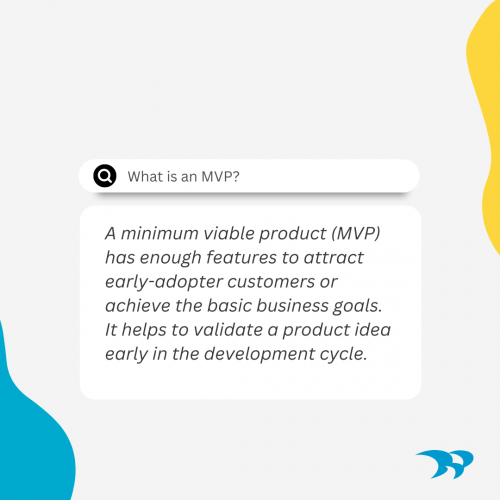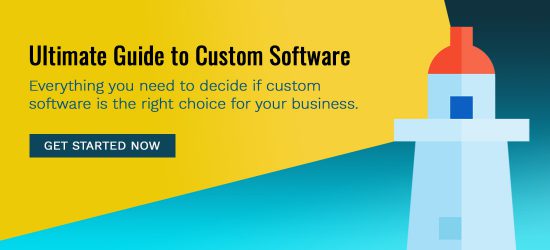When a company recognizes they need new software to take advantage of market opportunities, or realizes their existing platforms are no longer supporting their business requirements, they start investigating their options.
We’ve previously explored how to know if custom software development is the way to go for a business. Now, let’s take a look at how to prepare for discussions about custom software projects with prospective vendors and how to plan for budget conversations.
Preparing for Custom Software Development Vendor Meetings
While you might have a general idea of what your new software needs to do, taking a few extra steps out of the gate can help make discussions with vendors more productive.
Too often, companies leap into defining what the software needs to do. We recommend starting one step before that – what results do you want to achieve. Are you finding:
- Competitors are outperforming me.
- Customer service or support isn’t seamless.
- Sales are not as high as I want them.
- Information I need is hard to find.
- Employees don’t have enough time to do X.
Define the end results before you even start to think about what’s needed to get there. Once you know the goal, you can start thinking about the options to help you reach those goals.
Questions to ask:
- What are the opportunities or challenges?
- What are your top priorities – and what are the nice to haves?
- What do you want to accomplish – not just for this project, but for the business as a whole?
- What’s working or what’s not working in the organization?
- What’s the end goal? We’re not just talking about the end goal for a specific piece of technology but look more wholistically.
- What results will this help your business achieve?
- How will you define success?
- Who’s involved and who are key stakeholders?
- How much have you set aside for the project – for development and ongoing support?
- Are we prioritizing Capex or Opex for software budgets?
- What’s my organization’s IT roadmap? Are we moving to cloud, prefer on prem, etc. Are we a build or buy organization? The IT roadmap can focus the decision-making around tech stack.
The interconnected nature of our technology and business underscores the importance of knowing what pieces of the puzzle you’re working with, and how they connect.
Involve Stakeholders
You might think you know what your customers, business partners or employees need from you and your solutions – don’t assume.
Having early discussions with key stakeholders, including other internal departments and teams can help you hash out what’s truly important. These are critical conversations to have early in the process. Software development planning (and our eRAD process) is more productive and effective when teams have already fought out the priorities among themselves, and in advance of involving a development team.
What’s your MVP?
An MVP is truly a valuable player in this discussion – but it’s not your team superstar. MVP stands for minimal viable product. We always recommend companies start with the very basic iteration of their solution and build from that starting point.
Recognizing that an organization will likely add onto solutions in phases, the MVP is what you absolutely need to get out of the gate. And, with the minimums clearly defined, a clear budget can be established.
Budgeting Basics
The reason we start with the MVP is to create a baseline or a starting point – and this is critical for budget conversations. Like many things in life, you get what you pay for and sometimes budgets and wish lists don’t match.
When budgeting for software development projects, there are two sides that have to be costed, including:
Initial Development & Deployment
- Professional services and fees
- Licensing
- Tools and libraries
- Hosting and/or hardware
- Testing
- Training & Documentation
- Internal time and effort to support vendor
Ongoing Maintenance and Management
- Product upgrades and feature enhancements
- Software updates and bug fixes
- Professional services
- Licensing– as you grow, you will need to add new licenses
- Data and storage – as you grow, data requirements also increase
- Hosting and/or hardware
A good rule of thumb is to allocate 20-30% of the original development budget towards ongoing yearly maintenance and enhancements. That’s on top of any phased improvements or feature additions.
When preparing for the budget discussion, you don’t need to have a detailed costing, but recognize there are both one-time development and ongoing maintenance budget items that need to be factored in.
Keep an Open Mind
It might be tempting to take these early discussions and preparation to the point of starting to design the software. Don’t do this!
We’ve had customers come to us with application designs already started and as a result, they were very attached to those designs and concepts. This can limit your options and could mean your solution is not being designed to support enterprise-level architecture or development best practices.
However, having an understanding of your IT roadmap is a great idea. This can help developers mesh new solutions seamlessly into the existing and future technology frameworks.
Custom Software Planning & Budgeting: Best Practices
Custom software is an asset for businesses and can set the stage for business growth. Getting it right and planning for the future will help you ensure the product meets today’s needs and will scale as your business evolves.
Here are some recommendations to help get your project off to the best start.
- Have a Champion: Internal support for the project needs to come from someone with decision-making level support and budget.
- Budget for MVP: Set your budget threshold for MVP, recognizing enhancements and feature upgrades are planned and phased in. And, once the MVP is operational, you’ll find other departments and leaders will come forward to champion additional features that support their parts of the business.
- Involve Stakeholders: You might be surprised to hear what they truly want and need. Involving them in the process can also help create internal champions.
- Plan for Maintenance: Software isn’t a one and done proposition. You need to ensure you’ve got funds set aside to keep the solution up to date.
- Expect the Unexpected: Businesses are complex and the software running all different parts of a company are so interconnected, you can run into unforeseen challenges.
- Be Flexible: It’s good to have a plan out of the gates but you need to be able to pivot and change course if needed to achieve the end goals you’ve set.
- Add in Contingency: Having developed software for over 25 years, we can assure you there will be changes, revisions and unanticipated challenges that will affect cost and timeline. Do yourself a favour and plan for it.
If you’ve got a software development project you’re considering, you need a partner who can help. We’ve got a proven approach and the expertise leading businesses depend on to develop custom software applications that become core to their companies. Let’s chat.

